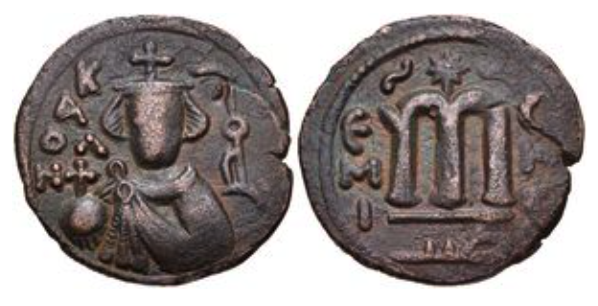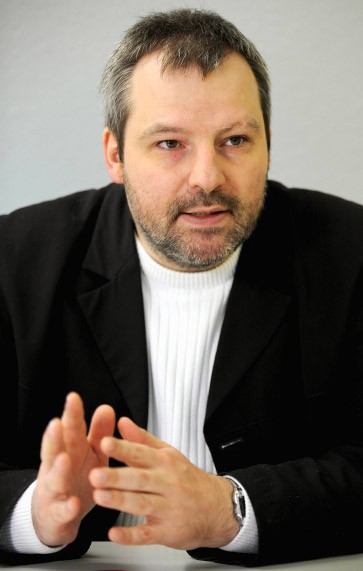
The lack of scientific curricula for the study of religion in Arab and Islamic schools and universities, in the way that these exist Western countries, has been, and still is, the main reason that millions of Muslims remain ignorant of the religions and cultures of other non-Islamic peoples and civilizations. Given that religions are influenced by each other’s cultures, anyone seeking to sever Islam’s roots from these Judaism, and from Christianity in particular, is effectively cutting the tree by its roots, and will lead to the tree dying.
BY NAFI SHABOU
CHRISTIANITY, FOR EXAMPLE, is an extension of Judaism and the Old Testament (Jewish ‘Torah’) remains for Christians part of their Bible alongside the New Testament. For Christianity has as its foundation the Old Testament and the New Testament was built upon that foundation.
Not looking for the sources of the Qur’ān and neglecting to delve into the historical roots of this book, is something strange and incomprehensible. Yet what is worse is that Muslim scholars have fought against, and are still fighting, anyone who seeks to engage this topic, for it will reveal facts that may challenge the sanctity of the Qur’ānic text.
Muslim scholars and jurists have avoided studying the sources of the Qur’ān with any scientific methodology, for fear of uncovering facts that clash with them
It is high time now to shed light on the information – concealed by the royal gatekeepers – which may surprise millions of simple Muslims concerning hidden facts about the roots of the Qur’ān, its sources and issues that over centuries have multiplied and accumulated.
The issue of sources for the Qur’ān and the Sunna of the Prophet is (in my personal opinion) one of the most critical issues needing to be revealed by scientific research – detached from Muslim faith – issues founded on historical facts and the study of religions and how they developed, in addition to what is being revealed by discoveries of ancient materials: coins, inscriptions, manuscripts and books, upon all of which researchers depend.
For whenever the contemporary researcher uncovers a relationship between the text of the Qur’ān and the texts and accounts of the ancients that preceded it, he can no longer rely on Islamic sources that have in every way attempted to distort, confuse or erase the historical facts behind the Qur’ān and its actual sources.
The reader therefore has to have recourse to the research efforts of Orientalists, historians, archaeologists, palaeographers and experts in comparative religious phenomenology if he seeks, as one living in the 21st century, to obtain scientific, irrefutable evidence. Muslim scholars and jurists have avoided studying the sources of the Qur’ān with any scientific methodology, for fear of uncovering facts that clash with them.
The Islamic heritage conceals a host of problems, out of which muddle emerged the fabricated belief that the Islamic literary heritage represents a ‘complete theology’
It is for this reason that Muslim scholars resort to intimidation and incitement against this, since they have been accustomed to keeping the Muslim at a distance from the facts and so that they acquiesce to what they receive from these traffickers in people’s minds.
Muḥammad Sven Kalisch, a former professor of Islamic jurisprudence at the University of Münster, abandoned Islam after discovering for certain that there was large-scale falsification within the Islamic heritage, both in the biography literature on Muḥammad and in the hadiths attributed to the Arab ‘Muḥammad’, and that there was even doubt as to the very existence of the Prophet Muḥammad. Kalisch took the Qur’ān to be a true and impeccable source, as did the Qur’ānists, but was surprised that the Qur’ān itself could not be trusted since it derived from roots in Christian heterodoxy and heresy. As he observed:
There are Muslim scholars who are aware that the heritage of the prophetic hadith is not reliable, that the method adopted by hadith scholars to sift the wheat from the chaff was not effective, and see the Qur’ān alone as the faithful anchor. But herein lies the dilemma: once confidence in the certainties of the Islamic heritage collapses, and if the ‘Prophet’ did not exist (with doubts about Muḥammad’s historical personality), he can no longer be associated with all this: we cannot attribute the sayings or even the Qur’ān to Muḥammad.
It is plausible that the Qur’ān emerged early, and the biography (sīra) of the Prophet was subsequently woven together on the basis of it, in the same way the Midrash (a Jewish non-canonical work) was for Biblical texts. Parts of the Qur’ān may have arisen in parallel with the sīra, as we find in Sūra 33, verse 40,[1] which described Muḥammad as the ‘Seal of the Prophets’ (an attribute of Jesus Christ according to Christoph Luxenberg’s research on the Dome of the Rock inscriptions).[2] This clearly indicates that the early Muslims did not at that time have any ‘apostolic’ awareness of a new religion … We continually come up against the same circle of storytellers who recount blatant absurdities and bequeathed us accounts from which Muslims and non-Muslims alike weaved together the biography of Muḥammad. There are those that argue that the hijra migration was nothing but a fabricated story, much like the myth of the splitting of the moon.[3]
Moreover, the Islamic heritage conceals a host of problems, out of which muddle emerged the fabricated belief that the Islamic literary heritage represents a ‘complete theology’ and not just a retelling of inherited myths and folk tales enriched by historical ‘evidence’ that is unsupported by any non-Islamic ancient documents. The inevitable conclusion is the absence of any ‘Muḥammad’. Even so, his existence remains in principle probable, but not in the sense of the Muḥammad as portrayed in the Islamic tradition.
What is established is that information from outside Islamic sources contradicts the ‘Prophet’s sīra’, and so writings on this sīra are thus not reliable nor credible. This is why focus on the theme of early Islamic Gnosticism and its role in the composition and formation of this new religion termed ‘Islam’. We are alerted to this by the work of heresiographs, although by the end of the third century AH this work had vanished from view.
No further comment is necessary on what is being said here by a German Muslim professor and thinker who studied Islamic jurisprudence at the University of Münster in Germany and under whom dozens of Muslim jurists graduated.
There are a number of questions to answer.
- What do the words Qur’ān, Muṣḥaf or Furqān actually mean?
- Does the Qur’ān have authoritative sources employed by the composers of the Qur’ān? If the answer to this is yes, what are these sources, and where did the composers of the Qur’ān draw them from?
- Why do Muslims deny the roots, foundations and nature of their Islamic religion, a nature which historical and archaeological data, religious studies, manuscripts and coins have revealed to be derived from Judeo-Christianity, in addition to Zoroastrianism, Mazdakism, Buddhism, Sabaean-Mandaeans, Christian heterodoxy and heresy, as well as pagan elements?
- Is it true that the Qur’ān, as a revelation, was brought by the angel Gabriel from the Preserved Tablet,[4] or was it found in the writings of the ancients?
- How long will Muslim religious scholars and rulers of Arab and Islamic countries conceal the truth of the origins, roots and sources of the Qur’ān and of Islamic law?
- Who benefits from cancelling and fighting anyone who seeks to know the facts about the roots of Judeo-Christian Islam?

Suggested Reading
Such questions we may leave aside for the moment – it may be that there will be someone who will wake, raises is head to acknowledge these facts and correct the daily mounting mistakes of Islamic societies. If Muslim scholars keep silence, turn a deaf ear, cover their eyes and absent their minds to avoid thinking, then the results will be terrifying: the entire edifice of Islam, which is based on mountains of lies, will collapse if Muslims fail to recognise their true identity, their roots and origins and their history – all of which has been falsified by individuals under the orders of the Muslim caliphs, from the Umayyad era of ‘Abd al-Malik ibn Marwān to the era of the Abbasids.
If Muslim scholars keep silence, turn a deaf ear, cover their eyes and absent their minds to avoid thinking, then the results will be terrifying
Taha Hussein, the ‘dean of Arabic literature’, says the following in his book On Pre-Islamic Poetry:
A thorough reading of the Qur’ān shows us that a large part of its verses was revealed, according to Islamic conception, during a period of controversy, strife and inter-religious debate … It is not easy, nay impossible, to believe that the Qur’ān was something completely new to the Arabs. If that were the case they would not have understood it, nor would some of them have chosen to believe in it while others opposed it and disputed it. Do you think that a people who argued about these things – arguments that the Qur’ān describes as vehement and its exponents as intelligent – were ignorant, stupid or coarse?
Reading between these lines of Taha Hussein is a momentous implication: that the Qur’ān (the Syriac ܩܪܝܢܐ qeryānā) was not something new, and was not written by Muḥammad the Arab Prophet, as Muslims claim.
[1] رَسُولَ اللَّهِ وَخَاتَمَ النَّبِيِّينَ ‘the messenger of Allah and the Seal of the Prophets’.
[2] Scholars argue that the term ‘Muslims’ appeared only about 70 years after the death of Muḥammad, and that the term muḥammad is actually not a name but a title given to the Messiah, the ‘glorified’ one, the chosen or favourite one. This is indicated by verses inscribed on the Dome of the Rock built by ‘Abd al-Malik ibn Marwān, as well as its use on coins. For discussions on this see the following Almuslih articles: The Hidden Origins of early Islam – 2 , When did Islam emerge? – 3 and The Qur’ān according to critical research – 5 . (Ed.)
[3] The contested myth was ultimately based on Qur’ān LIV (al-Qamar), 1: اقْتَرَبَتِ السَّاعَةُ وَانْشَقَّ الْقَمَرُ ‘The hour drew nigh and the moon did rend asunder.’
[4] The doctrine of the Preserved Tablet (al-Lūḥ al-Maḥfūẓ) takes its origin from texts such as Qur’ān LXXXV (al-Burūj) 21-22: بَلْ هُوَ قُرْآنٌ مَجِيدٌ فِي لَوْحٍ مَحْفُوظٍ (‘Nay, but it is a glorious Qur’an on a guarded tablet’) and Qur’ān XLIII (al-Zukhruf), 4: وَإِنَّهُ فِي أُمِّ الْكِتَابِ لَدَيْنَا لَعَلِيٌّ حَكِيم (‘And verily it is in the original of the Book with Us, truly elevated, full of wisdom’). For the complications this doctrine caused the Muslim scholars over the centuries, concerning whether the Qur’ān was ‘created’ or not see the Almuslih backgrounder paper on Khalq al-Qur’ān. (Ed.)
Main image: Umayyad copper fils minted in Homs c. 685 -697 AD. The crown of the soverign bears a cross as does the globe he is holding. One side of the coin features the Greek term καλον (kalon), the other side has the Arabic word طيب (ṭayyib), both signifying that the coin is ‘fine’, ‘valid’.
On this essay read the earlier sections: Part One; Part Two; Part Three; Part Four; Part Five, Part Six; Part Seven; Part Eight; Part Nine, Part Ten, Part Eleven, Part Twelve, Part Thirteen


